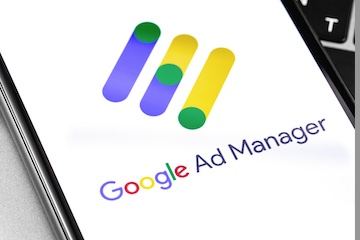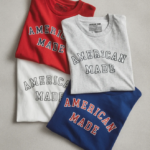Google Ad Manager quietly launches documentation Ad tag beta Email Newsletter.
Email advertising is Cookie ProofDoes not rely on third-party tracking cookies for targeting. The end of tracking cookies in web browsers (as early as 2025) will allow publishers and advertisers to New Channel.
The main reason GAM is adding support for it is likely to be email targeting capabilities.
Email advertising
Email advertisements typically fall into three categories:
- Sponsorship: Flat rate fee.
- Context-based: Pricing is per action.
- Programmatic subscriber targeting: Price per action.
In a technical sense, GAM is adding support for all of these. However, feature-wise, the Beta version has the best support for programmatic ad slots. Let’s consider each type and then look at ad formats.
Sponsorship
Newsletter sponsorships are often personal endorsements of the sender. In the example below, the photo shows the newsletter author using the product on a fishing trip. The advertisement is an endorsement by the author.
In this case, the tackle promotion is more like an old-fashioned print or TV ad. It’s mass media on a smaller scale. A newsletter publisher, whose readership is fly fishing enthusiasts, sells sponsorship to the tackle company, who then distributes the newsletter to everyone on their list.
Sponsorships transfer trust from the newsletter to the advertiser and can generate powerful sales.
Sponsorship pricing is usually a fixed amount.
Context-based
Context-based advertising focuses on the subject of the email and is similar to sponsorship, with one advertiser (and sometimes multiple locations) sent to all subscribers per deployment.
Contextual performance ads almost always feature copy written by the advertiser, not a personal recommendation.
Pricing is typically action-based, such as cost per impression, cost per click, or cost per sale.
program
Subscriber-targeted programmatic advertising is the email equivalent of Google search or social media pay-per-click advertising. This ad unit is a linked image.
Importantly, ads are shown based on the recipient, not just the content, meaning someone reading about rods and reels might be shown a retargeting ad for laundry detergent.
In theory, a fly fishing newsletter with 100,000 subscribers could potentially display 100,000 different ads.
Programmatic advertising pricing is performance-based.
Ad formats
Inserting sponsored or context-based ads requires very little setup, as all subscribers see the same headline, copy and call to action. Publishers can use HTML or drag-and-drop tools for these items, depending on the email platform. This is a native ad, and its format is the same as that of a newsletter, i.e. native HTML.
Programmatic advertising from Google Ad Manager and all other providers uses linked HTML image tags that contain a unique identifier for each subscriber, but does not use ad components such as headlines.
<div class="sponsorship">
<a href="https://www.practicalecommerce.com/...">
<img src="...&clkk=UNIQUE_ID">
</a>
</div>When a subscriber opens your newsletter, their email client (such as Gmail or Apple Mail) requests an image from the ad server, which reads the subscriber’s unique ID and returns an ad image targeted to that individual.
The image contains all the ad components, including the headline, copy, and CTA.
GAM Email Ad Tag
Google Ad Manager provides two email anchor tags: and one image tag I’ll focus on the image tag to explain how parameters are passed to the ad server.
first, sauce The image-tag property begins with the path to the ad server.
https://securepubads.g.doubleclick.net/gampad/ad
The newsletter publisher appends parameters to this base URL.
| ptt | Identifies the ad as a newsletter and must have a value of “21”. |
| I | Specifies which Ad Manager ad unit to display. |
| size | An HTML encoded list of allowed ad sizes. 216×36|300×50|320×50 becomes 216×36%7c300x50%7c320x50. |
| click | A unique subscriber identifier. |
| click | Specify the ad slot within the newsletter (Top or Center). |
| URL | The ‘view in browser’ URL for the current newsletter. |
| t | Optional key-value pairs for reporting or performance tracking. |
The most important parameters are clickCombines a unique subscriber identifier, a campaign identifier, and a date in day-month-year format.
*|UNIQID|*_*|CAMPAIGN_UID|*_*|DATE:d/m/y|*
GAM prohibits publishers from passing any personally identifiable information in their unique subscriber IDs, so please send a hashed email address instead of a plain text version.
Unit Performance
GAM tags work for sponsorship, context-based, or programmatic ads, but they only serve image ads. Subscribers who have images turned off will not see the message. Additionally, GAM image tags link to Doubleclick.net, a well-known ad server. All ad blockers remove this.
Therefore, GAM email tags are ideal for programmatic as they allow publishers to insert sponsorship and context-based ads without an ad management platform.











